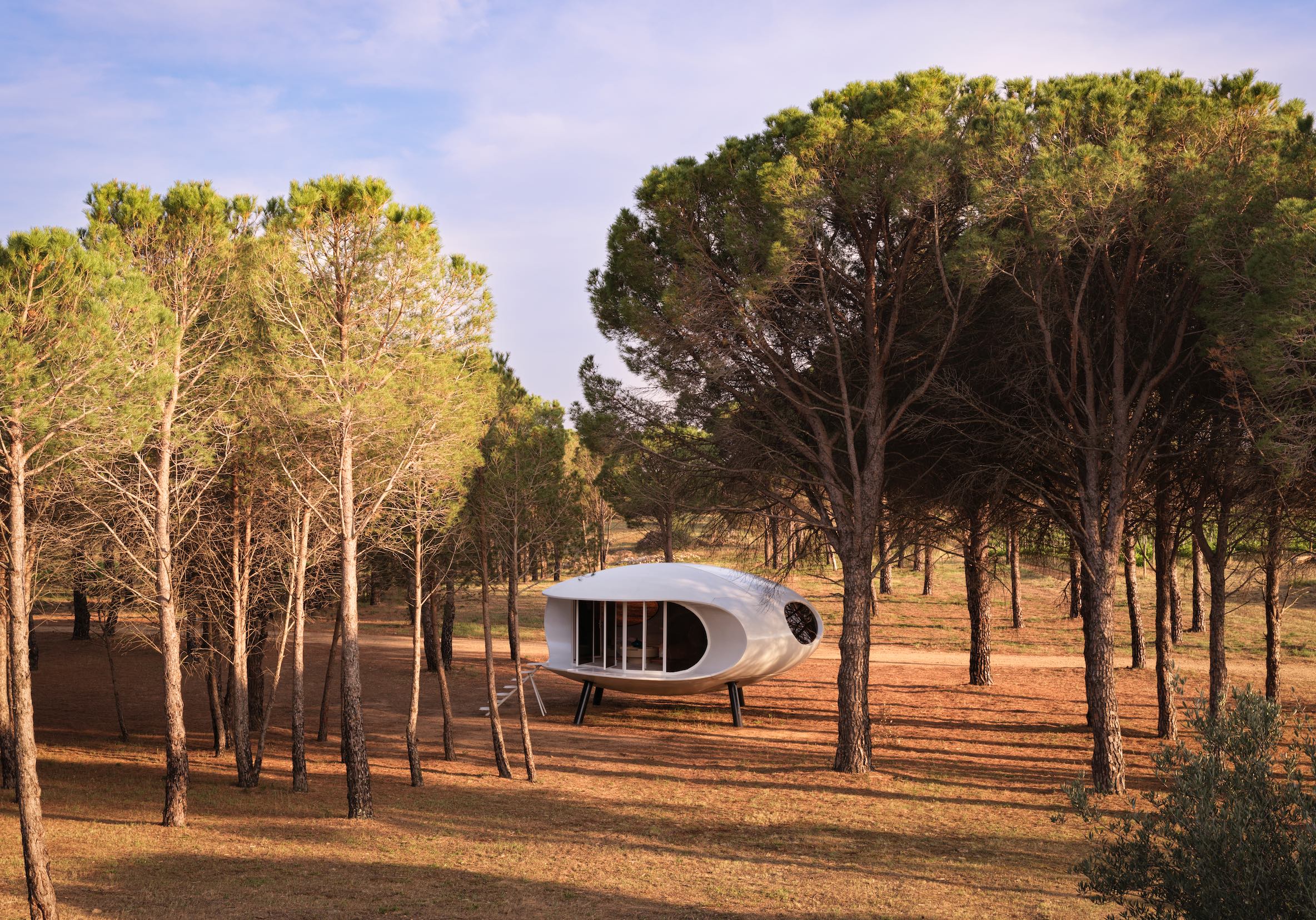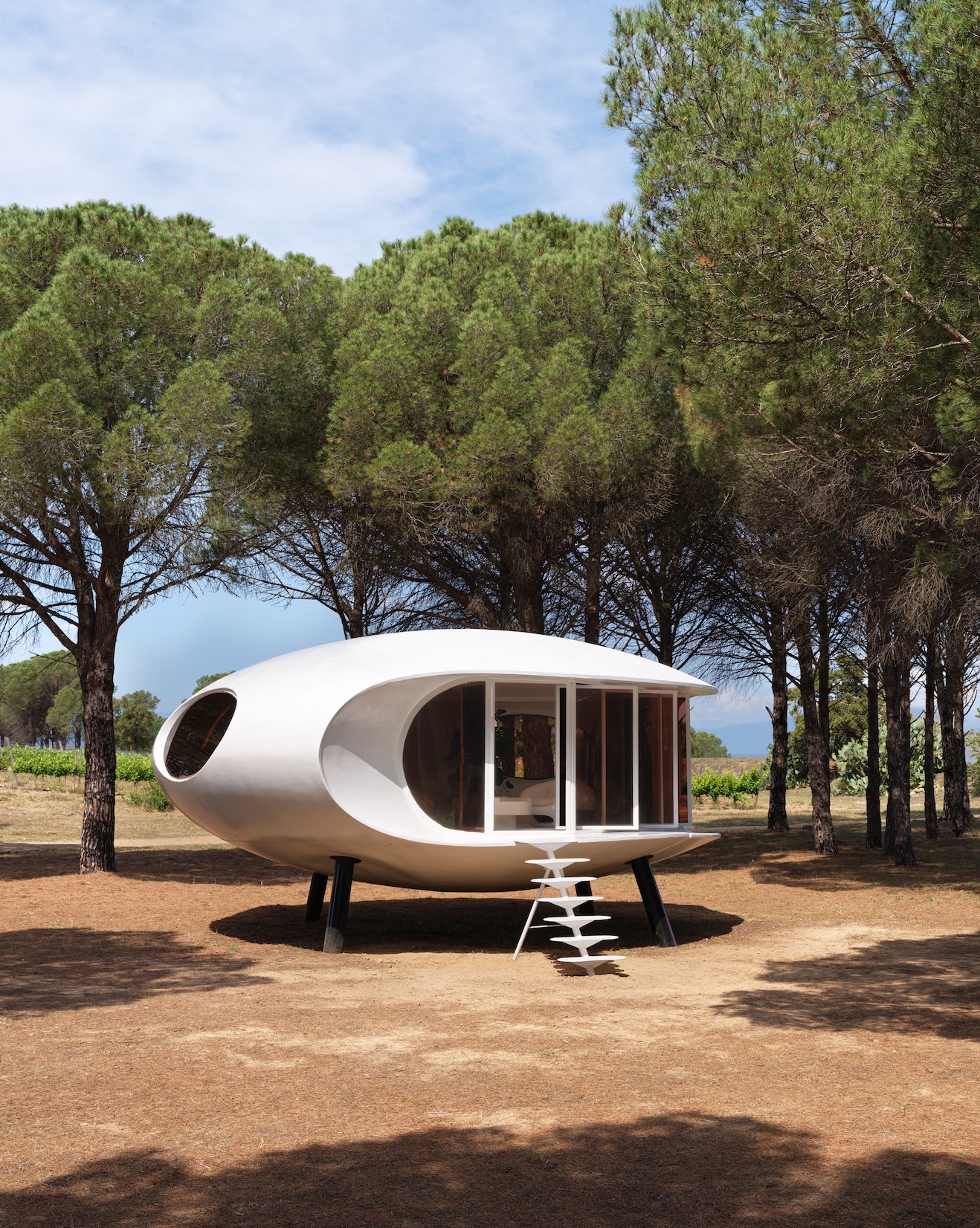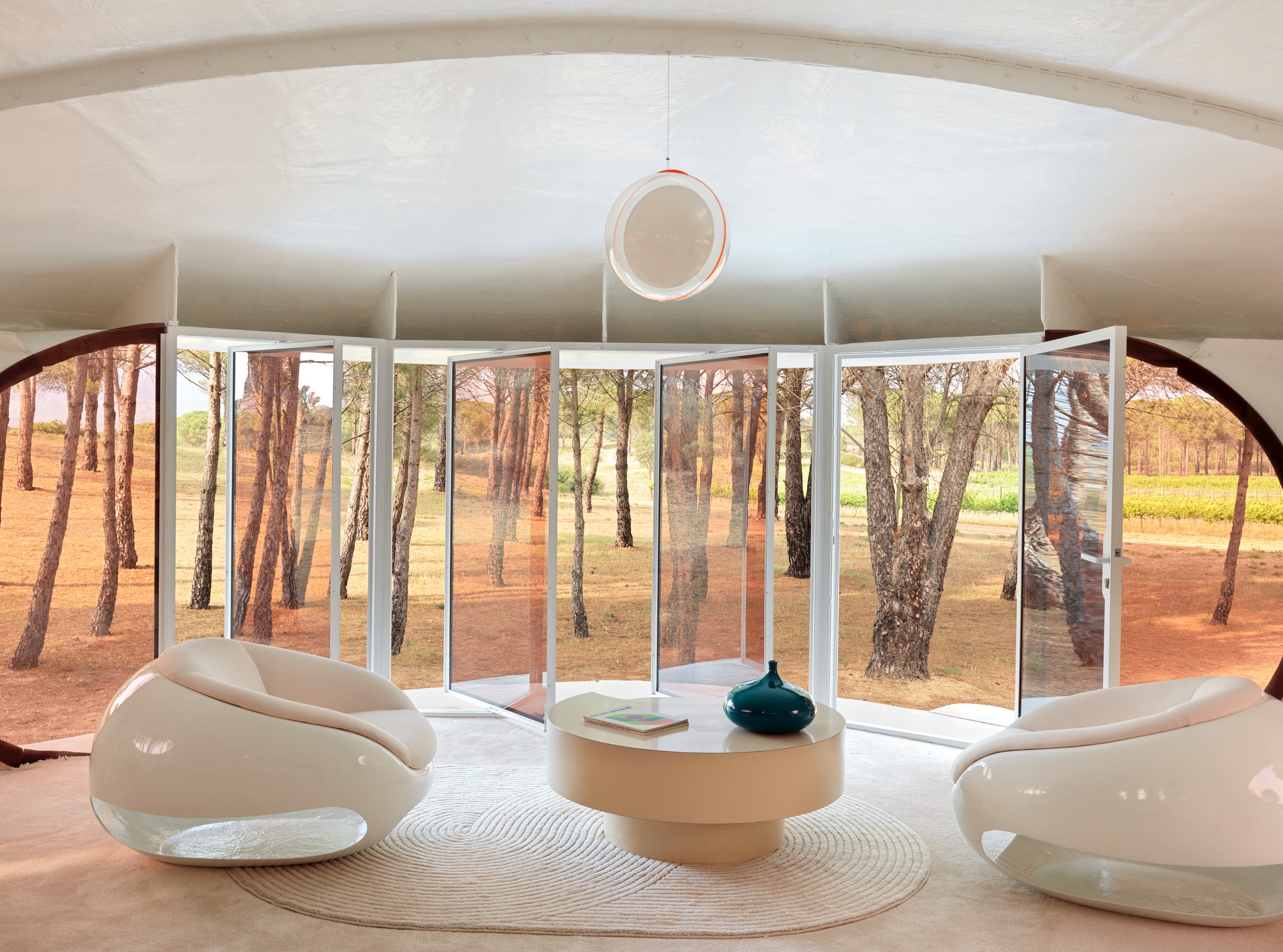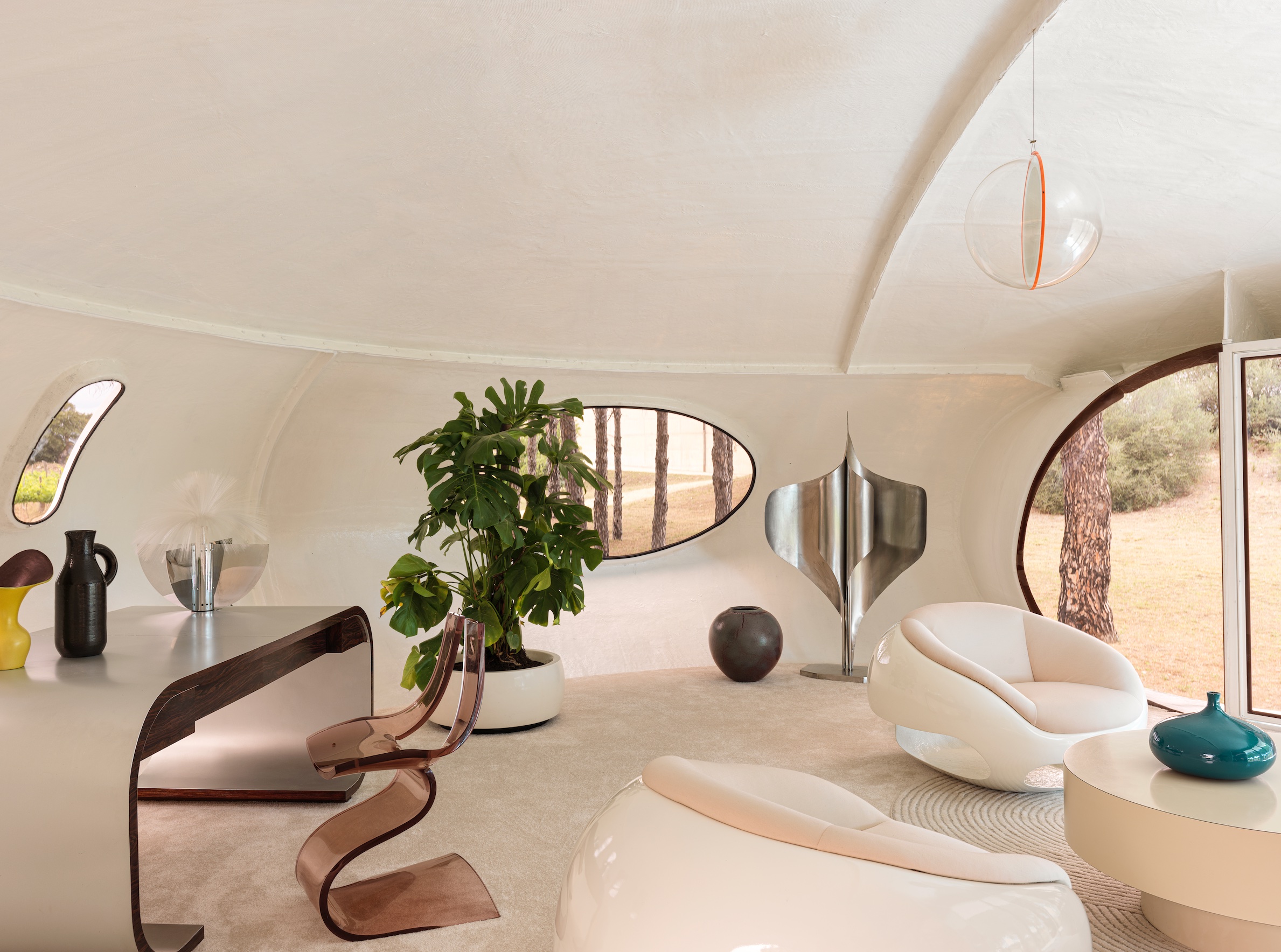Get a curated collection of design and architecture news in your inbox by signing up to our ICON Weekly newsletter
A perfectly restored fibreglass pod represents a labour of love for dealer and curator Clément Cividino, who is bringing back to life the prefabricated architecture of the 1960s and 1970s Space Age
 Photography by Stephan Julliard
Photography by Stephan Julliard
Words by Sonia Zhuravlyova
When Perpignan-based vintage furniture dealer and curator Clément Cividino was a young boy, he was mesmerised by the stars and all things intergalactic. So, it’s no surprise that, as he grew, he was increasingly drawn to the slick, futuristic silhouettes of the Space Age. It was a time when architects and designers were inspired by the space race, as well as pliable plastics that were newly at their disposal.
Many of the designs are still popular today – think Eero Saarinen’s white Tulip dining chairs and tables, the 1960 S-shaped Panton chair by designer Verner Panton or Eero Aarnio’s forays into fibreglass with his famous ball chair. Cividino, however, is most starstruck by the era’s experimental prefabricated architecture, much of which never made it beyond the prototype stage.
From the flying saucer-like Futuro House by Finnish architect Matti Suuronen, designed in 1968, to Georges Candilis’s Hexacubes from 1972, architects of all ilk pioneered materials such as polyester resin and fibreglass to revolutionise the way we live.
 Photography by Stephan Julliard featuring Clément Cividino
Photography by Stephan Julliard featuring Clément Cividino
‘I am very interested in this period – the possibility of creativity was bigger because there is a new material, plastic, so a lot of designers tried to make something new, some new forms,’ says Cividino. ‘A lot of designers and architects took inspiration from the forms of nature. And this is very, very interesting. It is my passion to bring the market something new – a lot of people sell the same mid-century pieces, which was becoming boring.’
Having already exhibited Georges Candilis’s Hexacube, a Six-Shell Bubble House by Jean-Benjamin Maneval, a former Total service station imagined by Jean Prouvé and, most recently, the Marabout House by Raymond Camus, his latest project is the Xasteros House, designed and manufactured by the Greek architect Nikolaos Xasteros in the late 1960s as a holiday home that could be put up in just a day.
No more than 10 of the sleek, oval dwellings were ever produced and Cividino knew immediately that he had stumbled upon a treasure when a friend sent him a picture of a dilapidated model while on holiday near Athens. After several trips and a charm offensive, Cividino persuaded the owner to sell this ‘UFO’ and launched a rescue mission to bring it back to France.
 Photography by Stephan Julliard
Photography by Stephan Julliard
The fibreglass shell, which had sat abandoned for some five decades, was fairly easy to clean up. ‘We took the house to a special boat company,’ he says. ‘The process was simple as it’s made from the same material as boats; here in the south of France we have many companies that specialise in boats as we are close to the sea.’
In the course of his research, Cividino also met the architect’s daughter, who shared plans and drawings that helped him with the restoration. The house was intended to have two bedrooms, a bathroom and a living space but Cividino’s is just one large volume.
One important intervention has been installing Altuglas windows in a smoky brown, both for aesthetic and cooling reasons. ‘We didn’t have a lot of documents or archives in relation to the windows. A special company in France made the tinted glass. The shaded glass makes it a very cosy, cocooned space.’
 Photography by Stephan Julliard
Photography by Stephan Julliard
The house is now on display at Terra Remota – a vineyard in northern Spain, whose owners are long-time collaborators. For the exhibition Cividino has decorated the interiors with some striking pieces of design, largely from the 1960s and 1970s, such as a mirrored ceiling light by Filippo Panseca, a coffee table and fibreglass armchairs by Mario Sabot, one of Louis Durot’s iconic Manta Ray floor lamps and a sculptural Plexiglas chair by Michel Dumas.
The prefabs of these decades, despite being the epitome of 1960s utopianism, never really took off, scuppered largely by the oil crisis of the early 1970s, which made production costs rocket. By rescuing the Xasteros House, what does Cividino hope to show those who come to see it?
‘In the first place, to explain this important social and cultural period of the Space Age of the 1960s and 1970s and to speak about this architecture, the designers’ ideals,’ he says. ‘Plus, it’s better to show them than to keep them in a warehouse, don’t you think?’
 Photography by Stephan Julliard
Photography by Stephan Julliard
The refurbished house is up for sale and Cividino hopes that it will go to someone with a similar appreciation for this type of architecture. Despite their commercial failure, they remain design curiosities – only one other example of the Xasteros House is believed to exist today.
Their futuristic shapes capture a certain moment in time and certainly spark our imaginations. All the prefab houses that Cividino has found and restored have sold to date – his Hexacubes were snapped up by fashion designer Isabel Marant for a pop-up shop. So, could these houses of the future ever make a comeback? Watch this space.
















